Most 1970 dimes have minimal value, but rare error coins are worth significantly more. The 1970 No-S Proof is the most valuable, ranging from $455 to $3,600 depending on grade, with PR69CAM versions reaching the highest prices. The 1970-D Reverse Double Die error is another notable variety, valued between $10-$100 based on condition (EF40 to MS66). Standard 1970-D and 1970-S regular strikes hold little value unless in pristine condition. Other errors like off-center strikes and clipped planchets exist but are less valuable. Philadelphia-minted dimes without mint marks are common and worth face value, except for the rare No-S proof variety.
Most 1970 dimes sitting in your change jar are worth exactly ten cents. But hidden among millions of ordinary Roosevelt dimes from that year are a handful of extraordinary errors that collectors will pay hundreds or even thousands of dollars to own. The key is knowing exactly what to look for—from missing mint marks on proof coins to dramatic doubling on the reverse. This guide breaks down which 1970 dimes actually command serious premiums and what makes them valuable.
The 1970 No-S Proof: The Crown Jewel of Modern Dime Errors
When the San Francisco Mint produced proof sets in 1970, a small number of dimes accidentally left the facility without their “S” mint mark. This wasn’t supposed to happen—proof coins are specially made for collectors with extra care and quality control. The missing mint mark represents a significant production error that created one of the most sought-after modern Roosevelt dime varieties.
According to PCGS population reports, several hundred examples of the 1970 No-S proof dime exist, making it rare but not impossible to find. If you have proof sets from 1970, checking for this error could be worth your time.
1970 No-S Proof Value Table:
| Grade | Standard Price | Cameo Price |
|---|---|---|
| PR-65 | $455 | $600 |
| PR-66 | $550 | $850 |
| PR-67 | $750 | $1,200 |
| PR-68 | $1,100 | $2,400 |
| PR-69CAM | N/A | $3,600 |
Heritage Auctions records show PR-69 Cameo examples reaching $3,600 at auction, while even lower-grade specimens in PR-65 start around $455. The Cameo designation refers to coins with frosted devices contrasting against mirror-like fields—a premium finish that proof collectors especially prize.
To identify this error, examine the obverse (front) of your 1970 proof dime carefully. On standard proof dimes, you’ll find a small “S” above the date near Roosevelt’s neck. The error coin shows absolutely nothing in that space—just empty field. Under magnification, you should see no trace of a removed or filled mint mark, as this is a genuine missing element rather than post-mint alteration.
1970-D Reverse Double Die: A Dramatic Doubling Error
Denver Mint dimes from 1970 number in the hundreds of millions, making most examples worth only face value. But one specific error variety from Denver has captured collector attention: the 1970-D reverse double die. This occurs when the die used to strike coins receives two slightly offset impressions during the hubbing process, creating visible doubling on the finished coin.
On the 1970-D reverse double die, the doubling appears most prominently on the reverse inscriptions. Look closely at “UNITED STATES OF AMERICA” and “ONE DIME” with a magnifying glass. The letters show a clear shadow or secondary outline, particularly noticeable on letters like E, D, and O. The torch’s flame bands may also display slight doubling.
1970-D Reverse Double Die Value Progression:
| Grade | Approximate Value |
|---|---|
| EF-40 | $10 |
| AU-55 | $15 |
| MS-60 | $20 |
| MS-63 | $35 |
| MS-65 | $65 |
| MS-66 | $100 |
The value climb reflects both rarity and condition sensitivity. While circulated examples in Extremely Fine condition might bring $10, pristine uncirculated specimens in MS-66 grade command $100 or more. The difference between MS-65 and MS-66 represents a significant price jump because maintaining flawless surfaces on these copper-nickel clad coins proves challenging.
Finding this error requires patience. You’ll need to examine multiple 1970-D dimes because the doubling varies in strength across different die states. Early die state examples show the strongest, most dramatic doubling, while later strikes as the die wore down display weaker effects. Most coin dealers carry inexpensive magnifying loupes (10x magnification works well) that make spotting these details much easier.
Philadelphia and San Francisco Regular Issues: Limited Value
The Philadelphia Mint produced 345,570,000 Roosevelt dimes in 1970 without any mint mark. These coins entered circulation across the country and remain extremely common today. A 1970 no mint mark dime in typical circulated condition holds no premium above face value. Even uncirculated examples grade MS-63 or MS-64 rarely exceed $2 to $3.
The exception involves truly pristine examples. A 1970 dime certified MS-67 with full torch bands and exceptional eye appeal might bring $20 to $40 from collectors building high-grade registry sets. But achieving this grade requires absolute perfection—no contact marks, full original mint luster, and sharp strike details throughout. These represent perhaps one coin in several thousand.
San Francisco produced 2,632,810 proof dimes in 1970 for inclusion in proof sets. With the “S” mint mark properly in place, these coins trade based on their proof finish quality. Standard 1970-S proofs in PR-65 or PR-66 sell for $3 to $5, reflecting their proof set origins. Only when the “S” mark is completely absent does value skyrocket into the hundreds.
Don’t confuse a worn or weakly struck “S” with the genuine No-S error. Sometimes mint marks appear faint due to die wear or strike pressure issues. The true 1970 No-S proof shows completely smooth, undisturbed fields where the mint mark should appear. Authentication by PCGS or NGC provides certainty for valuable finds.
Additional Error Varieties Worth Finding
Beyond the major varieties, several other 1970 dime errors appear in the marketplace. While less valuable than the No-S proof or prominent double die varieties, these errors still command premiums from error coin specialists.
Off-center strikes happen when a blank planchet sits incorrectly positioned in the striking chamber. A 1970 dime struck 50% off-center—showing half the design with half blank planchet—typically brings $30 to $75 depending on eye appeal and whether the date remains visible. Collectors prefer off-center errors where the date shows clearly, proving the coin’s identity. A 25% off-center strike with visible date might sell for $20 to $40.
Clipped planchet errors result from punching blanks too close together on the metal strip, creating a coin missing a curved section along its edge. A 1970 dime with a 10% to 15% straight or curved clip might fetch $8 to $15. Larger clips (20% or more) can reach $25 to $50. The clip must be clean and obvious—minor edge irregularities from post-mint damage don’t count.
Broadstrike errors occur when the restraining collar fails during striking, allowing the metal to spread beyond normal diameter. A 1970 broadstrike dime measuring 19-20mm instead of the standard 17.9mm typically sells for $15 to $35. The design appears flattened and spread out but remains complete and recognizable.
Die cracks and cuds represent die deterioration. A significant die crack across Roosevelt’s face or a large cud (raised blob from a broken die piece) might add $5 to $20 to a 1970 dime’s value. Minor die cracks affecting only small design areas generate little collector interest.
Grading Impact: Why Condition Multiplies Value
Understanding third-party grading transforms how you evaluate 1970 dimes. Professional grading services like PCGS and NGC authenticate coins, grade them on the 70-point Sheldon scale, and seal them in protective holders with grade labels. This process costs $20 to $50 per coin but provides market credibility.
For the 1970-D reverse double die, the difference between AU-55 (About Uncirculated) and MS-65 (Gem Uncirculated) represents a 4x value increase—from roughly $15 to $65. That jump reflects scarcity. While thousands of these errors entered circulation and survive in worn condition, far fewer remain in pristine mint state. Collectors building high-grade sets compete for MS-65 and better examples, driving prices upward.
The 1970 No-S proof shows even more dramatic grade sensitivity. A PR-67 example at $750 versus PR-69CAM at $3,600 represents nearly a 5x difference. At these upper grades, single-point improvements represent genuine rarity. The population reports show perhaps a dozen PR-69CAM specimens versus several hundred PR-67 examples.
When examining your coins, look for these grade-limiting factors: contact marks (small nicks or scratches), hairlines (fine lines from cleaning or polishing), discoloration or toning, and strike weakness (incomplete design details). A single distracting mark on Roosevelt’s cheek can drop a coin from MS-66 to MS-64, cutting value significantly.
Maximizing Your Search: Where to Find 1970 Dimes Worth Money
Starting your search effectively means knowing where to look. For the 1970 No-S proof, you’ll exclusively find this error in 1970 proof sets originally sold by the U.S. Mint. These five-coin sets came in hard plastic cases inside cardboard boxes. Many families purchased proof sets as gifts or investments and stored them away. Estate sales, antique shops, and online auctions frequently offer unopened or opened 1970 proof sets for $5 to $15—a worthwhile investment if you’re hunting the No-S error.
The 1970-D reverse double die appears in circulation and bank rolls. Because Denver produced hundreds of millions of these dimes, and a small percentage show doubling, your odds improve when searching large quantities. Coin roll hunting—purchasing sealed rolls from banks and examining each coin—gives you volume. A $5 roll contains 50 dimes, and dedicated searchers go through dozens of rolls looking for varieties.
Coin shows and local dealer inventories provide another avenue. Many dealers accumulate “junk boxes” of common-date dimes selling at face value or slight premiums. Spending an hour examining these coins could uncover overlooked errors. Always ask permission before searching dealer stock, and purchase fairly if you find something valuable.
Online marketplaces like eBay show sold listings revealing current market values. Search “1970 No-S dime” or “1970-D DDR dime” and filter for sold items. This research shows what collectors actually pay rather than asking prices. You’ll notice certified examples in PCGS or NGC holders command premiums over raw (ungraded) coins because buyers trust third-party authentication.
Taking Action: Authentication and Selling Your Discoveries
If you believe you’ve found a valuable 1970 dime variety, verification comes first. For the 1970 No-S proof, the error is straightforward—either the mint mark is completely absent or it’s present. Still, authentication matters because this coin’s value justifies professional grading costs.
Submit valuable finds to PCGS or NGC for authentication and grading. Both services offer economy submission tiers starting around $20 per coin with longer turnaround times (30-45 days) or faster express services for higher fees. For a 1970 No-S proof potentially worth $500 to $3,600, the grading fee represents smart insurance against counterfeits and provides market credibility when selling.
For the 1970-D reverse double die, deciding whether to grade depends on the coin’s condition. If you’ve found an uncirculated example with strong eye appeal, grading makes sense because MS-65 and better specimens command $65 to $100+. A heavily worn circulated piece worth $10 doesn’t justify a $20 grading fee—sell it raw to error collectors or dealers who understand the variety.
Selling options include local coin dealers, online marketplaces, and auction houses. Dealers typically offer 60-80% of retail value for immediate cash. Online sales through eBay or specialized forums reach more collectors but involve fees (around 13% on eBay) and require good photographs and descriptions. Major auction houses like Heritage, Stack’s Bowers, or Great Collections accept higher-value coins (generally $500+) and charge 10-20% seller fees but expose your coin to serious collectors willing to pay strong prices.
Take clear photographs showing both sides of your coin plus close-ups of key diagnostic features—the missing mint mark area on a No-S proof or the doubled lettering on a reverse double die. Good images with honest descriptions build buyer confidence and typically result in better prices. Include any certification numbers if your coin is already graded.
You may be interested:
- 1859 Indian Head Penny Coin Value Complete Errors List And No Mint Mark Worth Guide For Collectors
- 1911 V Nickel Coin Value Guide Complete Errors List And No Mint Mark Worth Today
- 1902 Dime Coin Value Complete Errors List With O S And No Mint Mark Worth Guide
- 1788 Quarter Coin Value Complete Guide Errors List And D S P Mint Mark Worth Revealed
- 1776 To 1976 Bicentennial Half Dollar Coin Value Complete Errors List And What Your D S And No Mint Mark Coins Are Actually Worth
- 1990 Penny Coin Value Errors List How D S And No Mint Mark Pennies Are Worth Thousands Of Dollars

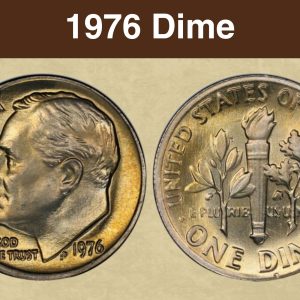
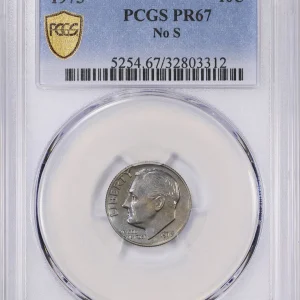
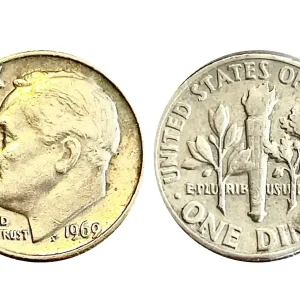
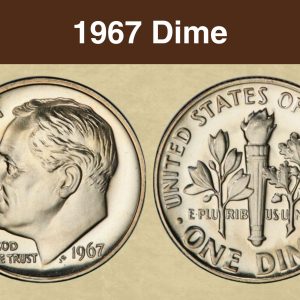
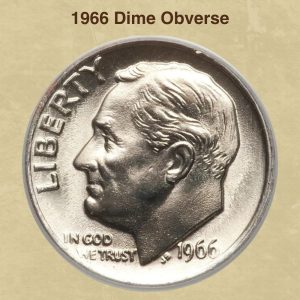
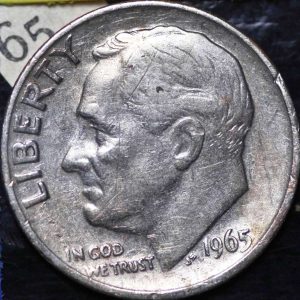
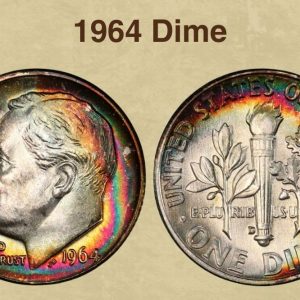
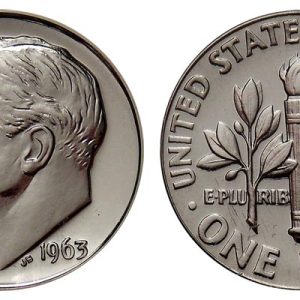
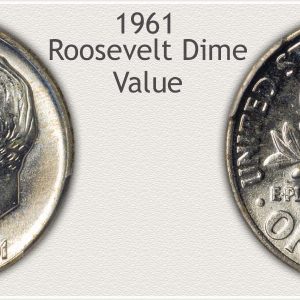
What dimes from the 70s are worth money?
1970s dimes can be valuable if they are a rare “No-S” proof dime from 1970, a high-grade coin with an error like a doubled die, or a coin in an exceptional, uncirculated condition. The 1970-S No-S proof dime is a significant error coin due to the mintmark’s accidental omission, making it particularly valuable to collectors.
What errors to look for on dimes?
When looking for valuable dime errors, check for coins with a double die obverse, where features like the date or motto are doubled, as well as errors in the striking process, such as an off-center strike or a broadstrike where the collar is missing. Other errors include missing or clipped planchets, missing clad layers, or striking through debris like cloth (a strikethrough error ).
What 1970 dime has no mint mark?
The coin is uncertified and ungraded, commonly found in circulation but sought after by collectors for its scarcity and historical significance as part of the Roosevelt Dime series. The product is a circulated 1970 Roosevelt Dime with no mint mark, struck at the Philadelphia Mint in the United States.